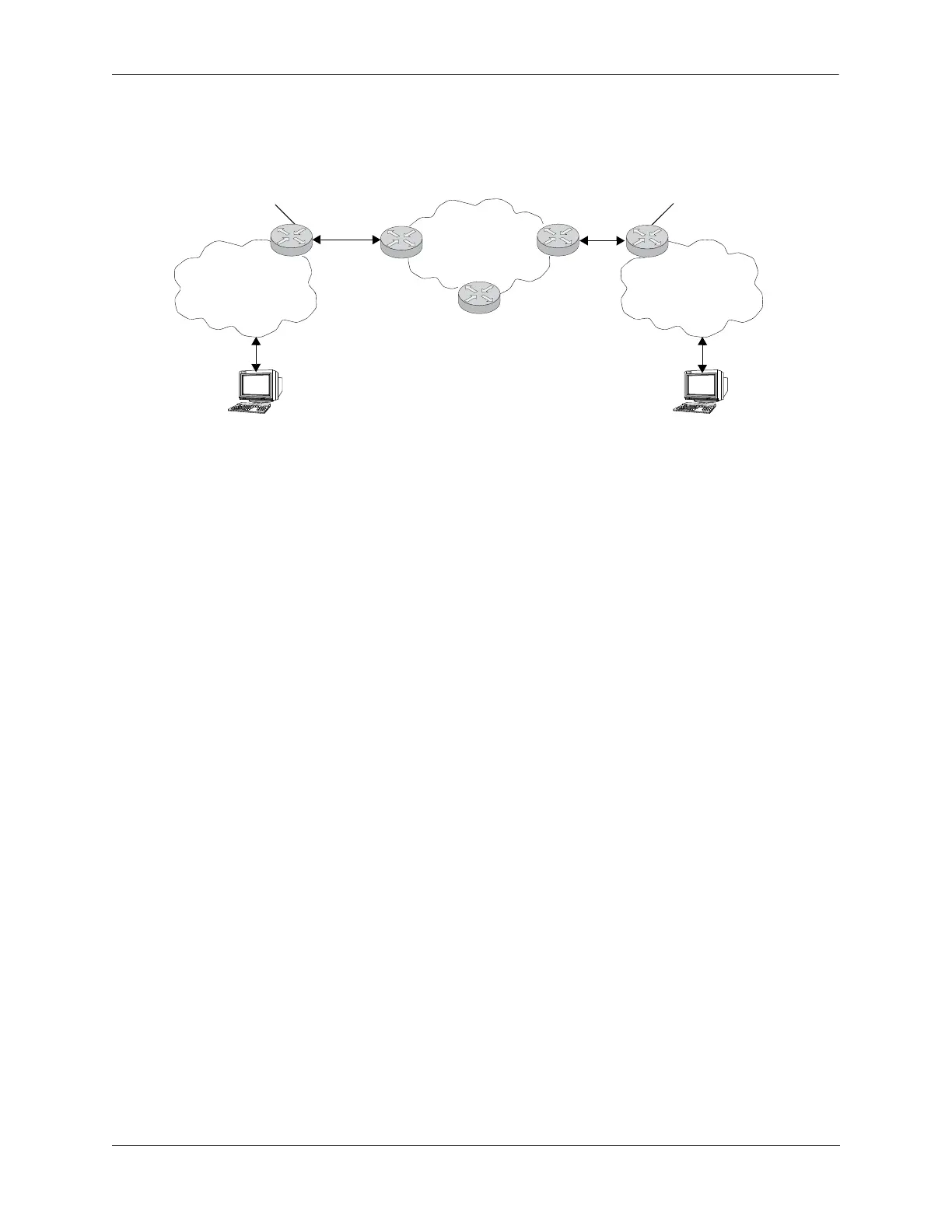Configuring IPv6 IPv6 Overview
OmniSwitch AOS Release 8 Network Configuration Guide December 2017 page 17-10
The following diagram illustrates the basic traffic flow between IPv6 hosts communicating over an IPv4
domain:
In the above diagram:
1 The 6to4 hosts receive 6to4 prefix from Router Advertisement.
2 The 6to4 host sends IPv6 packets to 6to4 border router.
3 The 6to4 border router encapsulates IPv6 packets with IPv4 headers and sends to the destination 6to4
border router over the IPv4 domain.
4 The destination 6to4 border router strips IPv4 header and forwards to 6to4 destination host.
6to4 Site to IPv6 Site over IPv4/IPv6 Domains
In this scenario, 6to4 sites have connectivity to native IPv6 domains through a relay router, which is
connected to both the IPv4 and IPv6 domains. The 6to4 border routers are still used by 6to4 sites for
encapsulating/decapsulating host traffic and providing connectivity across the IPv4 domain. In addition,
each border router has a default IPv6 route pointing to the relay router.
In essence, a relay router is a 6to4 border router on which a 6to4 tunnel interface is configured. However,
a native IPv6 router interface is also required on the relay router to transmit 6to4 traffic to/from IPv6 hosts
connected to an IPv6 domain. Therefore, the relay router participates in both the IPv4 and IPv6 routing
domains.
6to4 Site
IPv4 Domain
6to4 Host
6to4 Host
6to4 Site
IPv6 6to4
Border Router
IPv6 6to4
Border Router

